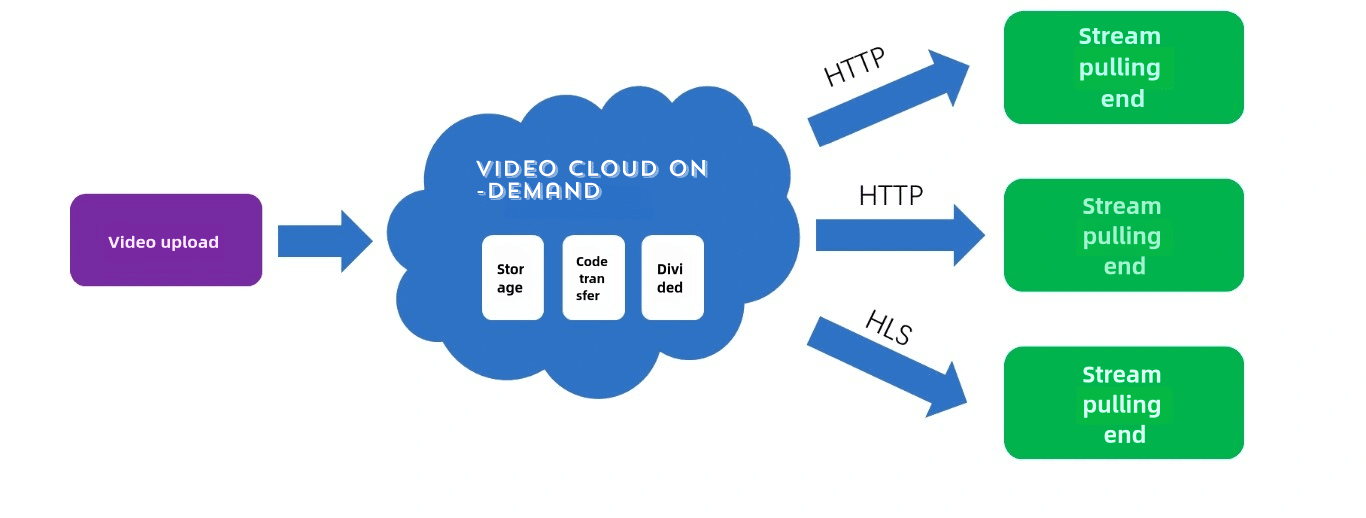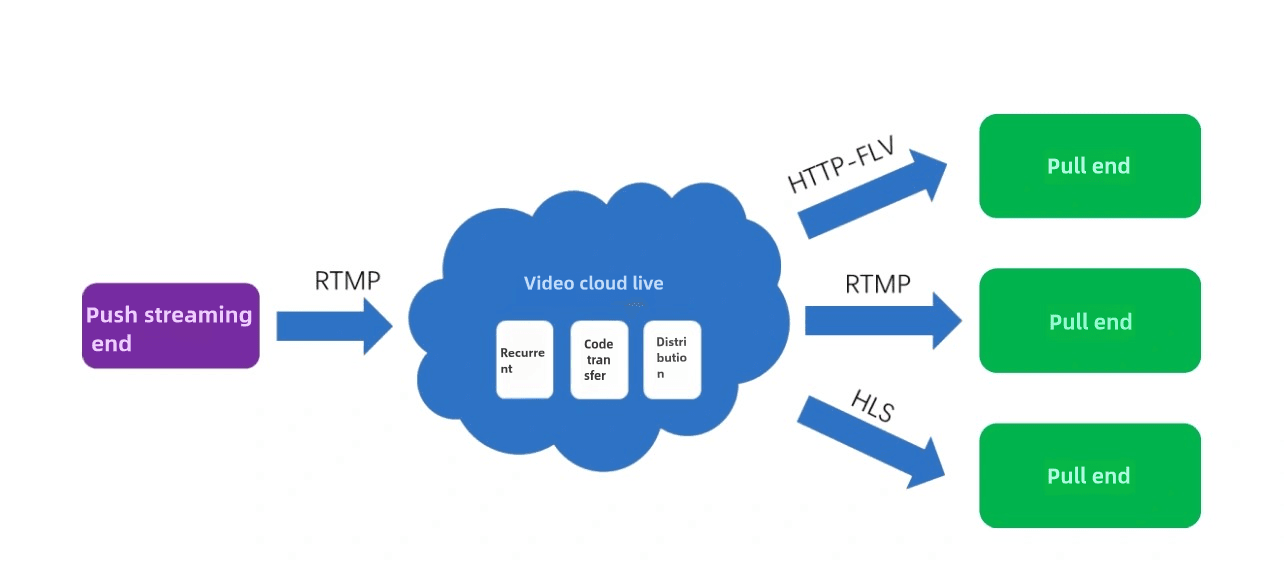In the rapidly evolving landscape of digital media and communication, OTT (Over-the-Top) and RTC (Real-Time Communication) technologies have become increasingly prevalent. These technologies are reshaping how we consume content and interact with each other online. This blog post will explore the common scenarios where OTT and RTC technologies are applied, providing insights into their functionalities and use cases.
1. Video-on-Demand (VOD)
Video-on-Demand is a cornerstone of OTT services, offering non-real-time, unidirectional online video content. This technology allows users to access pre-recorded content at their convenience, revolutionizing how we consume media.

Key Features of VOD:
- Content Storage: Videos are stored in cloud storage systems, ensuring scalability and accessibility.
- Transcoding: Dedicated transcoding clusters convert videos into various formats and qualities to suit different devices and network conditions.
- Content Delivery: Content Delivery Networks (CDNs) distribute videos efficiently to users worldwide, minimizing buffering and improving playback quality.
Common VOD Scenarios:
- Streaming platforms (e.g., Netflix, Amazon Prime Video)
- Online music services
- E-learning platforms
- Corporate training modules
- Replay of live events
The VOD process typically involves:
- Content upload to cloud storage
- Transcoding for multiple formats and bitrates
- Distribution through CDN
- On-demand playback by users
2. Live Streaming
Live streaming represents a real-time, unidirectional online service within the OTT ecosystem. It typically involves a broadcaster streaming content to multiple viewers simultaneously.

Key Aspects of Live Streaming:
- Real-Time Broadcasting: Content is delivered to viewers as it's being created.
- Scalability: CDNs are crucial for distributing live content to large audiences.
- Low Latency: Minimizing delay between the broadcaster and viewers is essential for a good user experience.
Common Live Streaming Scenarios:
- Entertainment and celebrity streams
- Gaming broadcasts
- Live sports events
- Conference and event broadcasts
- Outdoor adventure streams
The live streaming process generally includes:
- Broadcaster uses RTMP (Real-Time Messaging Protocol) for streaming
- CDN receives and distributes the stream
- Viewers access the stream through various devices
3. Real-Time Communication (RTC)
RTC technology enables real-time, multi-participant interactive audio and video services. It's characterized by extremely low latency, typically under one second end-to-end.
Key Features of RTC:
- Ultra-Low Latency: Essential for natural, real-time interactions.
- Multi-Participant Support: Allows multiple users to communicate simultaneously.
- Adaptive Quality: Adjusts to network conditions to maintain connection stability.
Common RTC Scenarios:
- Video conferencing
- Virtual classrooms
- Telemedicine consultations
- Customer service video calls
- Online gaming with voice chat
- Virtual karaoke rooms
RTC typically utilizes UDP-based proprietary protocols for data transmission to achieve optimal real-time performance. The process involves:
- Users joining a virtual room or channel
- Simultaneous upload and download of audio/video content
- Server-side mixing and distribution of streams
4. Bypass Live Streaming
Interactive live streaming combines elements of traditional live streaming with RTC capabilities, creating a hybrid scenario that's gaining popularity in various applications.
Key Aspects of Interactive Live Streaming:
- Multi-Host Interaction: Allows multiple broadcasters to interact in real-time.
- Audience Participation: Enables viewers to join the broadcast temporarily.
- Scalability with Low Latency: Maintains low latency for hosts while supporting large viewer numbers.
Common Interactive Live Streaming Scenarios:
- E-commerce live sales
- Interactive webinars
- Live Q&A sessions
- Multi-player live game shows
- Virtual concerts with fan interaction
The process typically involves:
- Multiple hosts connecting via RTC for low-latency interaction
- A bypass stream created for broader distribution
- CDN used to deliver content to a large audience
- Viewers can temporarily join the RTC session for interaction
Conclusion
The landscape of OTT and RTC technologies continues to evolve, offering increasingly sophisticated solutions for content delivery and real-time communication. From Video-on-Demand services that have transformed how we consume media, to live streaming that brings events to global audiences in real-time, and RTC that enables seamless video conferencing and interactive experiences, these technologies are at the forefront of digital communication and entertainment.
As developers and content providers, understanding these scenarios and their technical requirements is crucial for creating engaging, high-performance applications. The future of OTT and RTC promises even more innovative use cases, potentially incorporating emerging technologies like AR/VR, AI-driven content personalization, and 5G networks for enhanced mobile experiences.
By leveraging the strengths of each scenario – the accessibility of VOD, the excitement of live streaming, the immediacy of RTC, and the engagement of interactive live streaming – developers can create rich, immersive experiences that cater to the diverse needs of modern users. As these technologies continue to advance, they will undoubtedly play an increasingly central role in how we connect, learn, work, and entertain ourselves in the digital age.